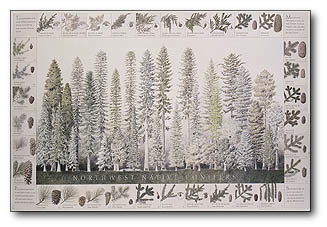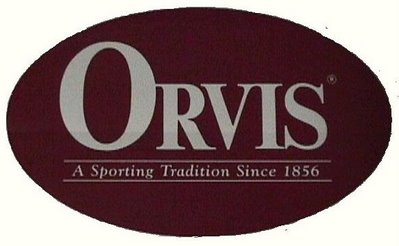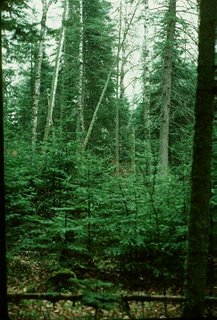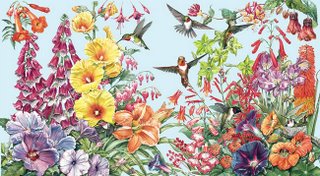
Pesticide effects database released
by Nathan Rushton, 12/31/2006
The Eureka-based Californians for Alternatives to Toxics has unveiled on its Web site an assembled database of hundreds of scientific studies and research documents related to the harmful effects of pesticides and herbicides on amphibians and reptiles.
CAT Executive Director Patty Clary said the database project began about six years ago when a CAT member in the Southern Humboldt County area alerted the group that swimming holes in several local rivers and creeks were no longer populated by frogs where frogs had always been observed.
“This was a very frightening situation,” Clary said.
The Reptile, Amphibian and Pesticides database, or RAP, builds upon an earlier database covering literature up to 1998, which was assembled by the Canadian Wildlife Service.
CAT’s updated data pool is searchable by species and genus, location of research, pesticide studied and toxicological effect and includes a list of 327 scientific papers published since 1999 on the effects of pesticides on amphibians.
Another 128 research papers on pesticides’ impacts on reptiles is also included.
The database, which will be updated as new information becomes available, can be found on CAT’s Web site at www.alternatives2toxics.org.
The release of the database follows on the heels of last week’s action by CAT, which joined with several environmental groups and organic farmers in announcing that a lawsuit was filed in the U.S. 9th Circuit Court of Appeals over the Environmental Protection Agency’s recent ruling change on how it permits pesticide applications near water.
The groups, which also included Bay Area water-quality watchdog group San Francisco Baykeeper, sued the EPA for its decision that spraying of pesticides into the nation’s waters should no longer be regulated by the Clean Water Act and will now be regulated under the more obscure Federal Insecticide, Fungicide and Rodenticide Act.
With declining amphibian populations linked to pesticides already well documented, Clary said she is concerned about the health of amphibians and reptiles and the “deregulating” of pesticides by the EPA in its ruling change, which the groups say allows contamination of waterways without agency oversight.
Although Clary said pesticides and herbicides are not usually the primary cause of the decline of amphibian populations, they are an additional stress that makes them more vulnerable to disease.
Amphibians are often referred to as the “canary in the coal mine” of the environment, which Clary said should cause people to be “worried about our own skins” when amphibian populations decline.
Of particular concern locally, Clary said, is the use by area timber companies of the weed-killing herbicide atrazine on its properties, which she said is known to leach into watersheds and have serious effects in reptiles and amphibians.
Scientists from Pacific Lumber Co. said the use of atrazine, which is done by licensed applicators, is non-standard application typically done in 3-foot circles, away from streams already protected by buffers, to deal with heavy grasses that compete with replanted trees.
The U.S. Department of Health and Human Services’ Agency for Toxic Substances and Disease Registry lists atrazine as a non-volatile, inflammable, odorless white powder herbicide that dissolves readily in water.
Typically used on farms, along highways and on railroad rights-of-way, the DHHS literature states atrazine may wash from the soil into streams or groundwater, where it will stay for a long time because breakdown of the chemical is slow in water, although the DHHS states atrazine does not accumulate in living organisms such as algae, bacteria, clams or fish.
In “Effects of atrazine on embryos, larvae, and adults of anuran amphibians,” by researchers J. W. Allran and W. H. Karasov in the 2003 Environmental Toxicology and Chemistry publication, which is found in the CAT’s database, the report stated “direct toxicity of atrazine is probably not a significant factor in recent amphibian declines.” However, frogs exposed to the highest atrazine concentration stopped eating immediately after treatment began and did not eat during the 14-day experiment, according to the scientific document.
Washington not on the same page with environmentalists
EPA Assistant Administrator for Water Benjamin H. Grumbles said he disagrees with the environmental groups’ s assertions that the ruling change is a departure from the agency’s obligation under the Clean Water Act.
Instead, Grumbles said the narrowly crafted rule, which he said was done with Congress’ help over the past two years, will boost public health by reducing the risks from mosquitoes and invasive plant and animal species.
But Clary takes issue with the EPA’s decision and said the FIFRA, which is a broad and general law that does not directly address water quality, has more to do with registering pesticides and was meant to complement, not compete, with the Clean Water Act.
“We believe that what they have done is wrong and made a mistake in having FIFRA dominate the Clean Water Act,” Clary said. “It is what the chemical companies wanted and the EPA delivered it.”
Under the Clean Water Act, Clary said provisions required pesticide and herbicide applicators to set up a process by which they had to take steps to reduce and eliminate those pesticides from getting into the water.
Grumbles characterized the ruling as an important clarification of a position the agency has already taken in the last few decades, which is that there isn’t a need for Clean Water Act permits for pesticide applications if they are covered under FIFRA.
“It is important to note that the rule does not pre-empt state and local laws governing pesticide applications,” Grumbles said.
Suggesting that many local agencies have been caught in “regulatory limbo” in recent years, Grumbles said public health officials have run into problems where there is uncertainty if they need to get a permit under the Clean Water Act.
Humboldt County Senior Agricultural Biologist Jeff M. Dolf recommended that anyone applying pesticides who is uncertain about permitting should “err on the side of caution” and contact the county agriculture department or the regional water quality board.
In speaking with a local pest control business that does the vast majority of the herbicide work for area timber companies, Dolf said that the EPA’s ruling change will not impact the habitat of the California Department of Fish and Game’s species of special concern, the Northern red-legged frog, in Humboldt County.
From Eureka Reporter 12/31/2006









